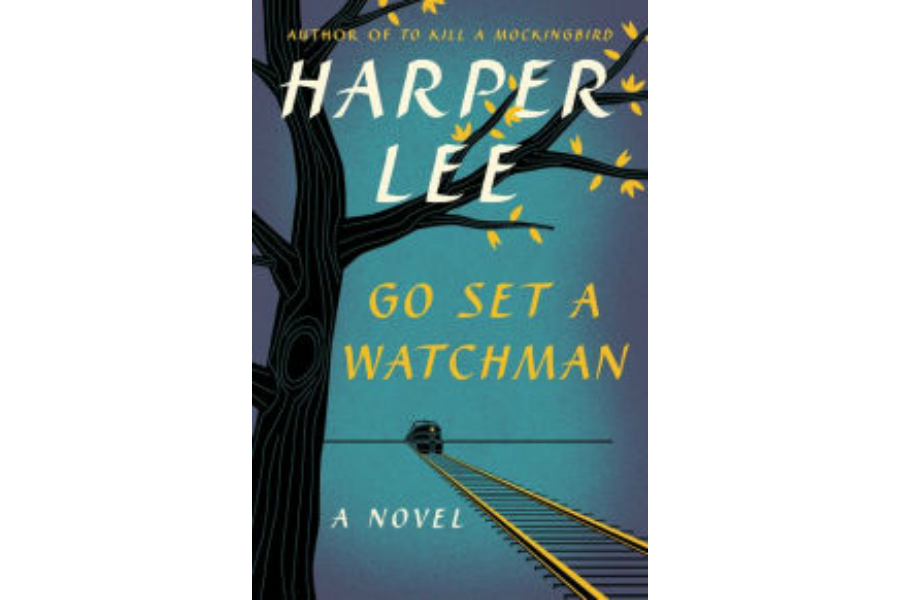'Go Set a Watchman' is an odd follow-up to its classic sister
Loading...
By many accounts, American literature’s most famous one-hit wonder should have stayed that way.
Indeed, Harper Lee’s Go Set a Watchman, the most controversial 20th-century novel of the 21st century, has problems beyond its now-notorious depiction of Atticus Finch as a fallen hero. Talky and preachy, this sort-of-sequel lacks the cinematic power of its legendary predecessor. What’s more, the novel’s origin story is peculiar, and the worrisome dispute over the frail Lee’s role in its surprise release is enough to make anyone want to skip a second visit to the Maycomb of “To Kill a Mockingbird.”
But “Go Set a Watchman” is hardly the horror show suggested by early reviews. As understandably rough as it is, readers will thrill to Lee’s sly humor and vivid storytelling. And those who can bear the stunning transformation of an American icon will gain insight into the minds of the polite racial separatists, those who thought men in black robes – not white ones – could preserve Southern life’s strict divides.
Lee actually wrote this novel first, setting it in the 1950s with many of the same characters as “To Kill a Mockingbird.” As the story goes, her editor wanted to hear more about the childhood of Jean “Scout” Louise Finch, told here in flashbacks, and sent Lee back to her typewriter. And so one of America’s most beloved and influential novels was born, a kid-friendly classic that still delights and disturbs.
Meanwhile, “Go Set a Watchman,” named after a phrase in a Bible verse, would vanish for six decades, a first draft left behind without polishing – or editing out – storylines repeated in (or contradicted by) “To Kill a Mockingbird.”
As the novel begins, a 26-year-old Jean Louise is taking the train back to Maycomb, Ala., from New York City, balancing a blend of newfound sophistication and built-in cluelessness. Her father is aging, her live-in aunt is a moralizing Southern fussbudget, and she has a beau suitable for banter and scandalous dips in the lake.
As they did with “Mockingbird,” readers will happily spend the early chapters enjoying Lee’s deceptively funny descriptions of Southern life and Southern people. Amid the humor, Lee reveals how good manners and gentility cover the hypocrisy within. But as a Southerner herself, Lee’s gentle enough to not eviscerate those who learn and teach the wrong lessons.
After plenty of scene-setting, readers get to the dramatic de-hero-izing of a man called Atticus Finch. Jean Louise, a woman “born color blind,” finds a vile pamphlet in his house titled “The Black Plague” and discovers her father is part of a local council dedicated to preserving the second-class status of blacks and stopping the dire threat of “mongrelization.”
“She felt sick. Her stomach shut, she began to tremble.” Many readers may feel the same way. Atticus Finch, who spends little time defending himself in the book, isn’t a vicious white supremacist bent on hurting black people. But he’s committed to states rights and Southern tradition, and he can only see catastrophe in a more integrated society.
In essence, a man who’s used the courts in search of racial justice seeks to keep blacks in their place with the help of the law. Under a mask of dedication to American-style self-reliance – he’s said to have “a constitutional distrust of paternalism and government in large doses” – Atticus supports racism.
Once again, Harper Lee tears off the disguise so we can see the ugly truth beneath, although she sometimes seems to be torn about whether Atticus and his counterparts have any good points.
There’s another startling transformation in “Go Set a Watchman,” this one of an elderly Calpurnia, the warm-hearted if stereotyped cook and housekeeper in “To Kill a Mockingbird.” Again, she dumbs down her grammar to meet the expectations of outsider whites. But this time, she goes further to express her frustration in a moment that an editor – if this book ever had one – might have struck out as too pat and unbelievable.
Calpurnia’s role could provide more fodder to critics of “To Kill a Mockingbird” who looked in vain for complex black characters who don’t serve as either noble victims or symbolic equivalents of their counterparts known as white trash.
There are other failures of imagination, and not just that of Atticus Finch. Even the progressive Jean Louise, and perhaps the progressive author who created her, can’t seem to contemplate a modern multiracial society. It’s a useful reminder of how even the most forward-thinking among us have limits, ones that only future generations will see clearly.
As we open the covers of these two Harper Lee novels – one a masterpiece and the other a revealing oddity – we should look closely within. Some six decades on, they’re more than a pair of time capsules. Each one holds up a mirror and beckons us to ponder as characters not unlike ourselves come to life.







